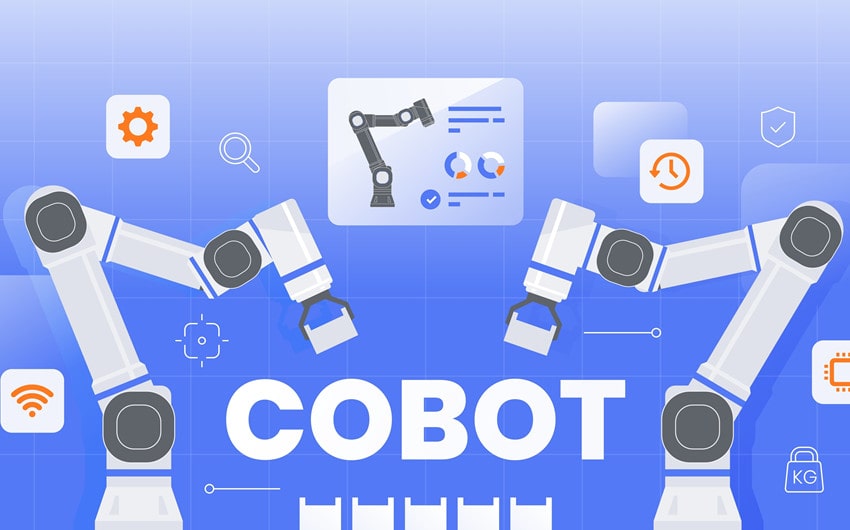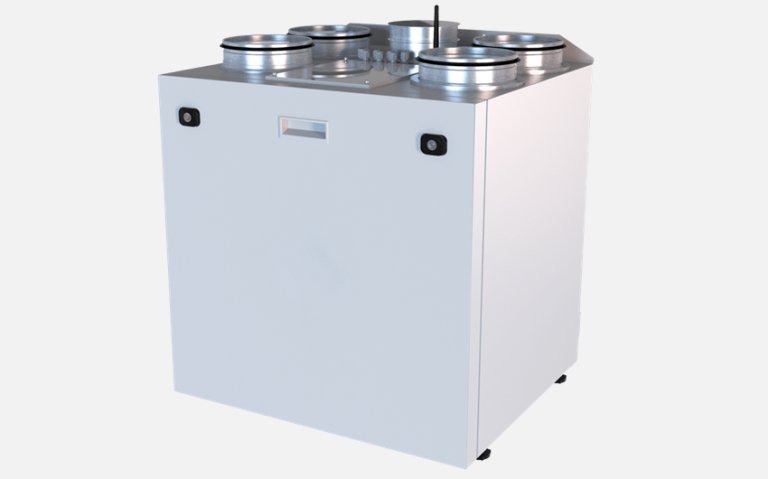How Cobot Welding Is Transforming Modern Manufacturing
If there’s one thing shaking up the manufacturing world right now, it’s cobot welding. These collaborative robots aren’t just machines—they’re teammates. Designed to work right alongside humans, they’re changing the way we weld by blending precision with a surprising dose of efficiency.
Cobot welding is reshaping the shop floor by teaming up robots with human welders. These machines aren’t locked in cages or separated behind glass—they’re out there on the line, assisting with welds that demand consistency and accuracy.
Why does that matter?
- Better Safety: Cobots handle the risky tasks, keeping people out of harm’s way.
- Lower Costs: Automation cuts back on labor expenses and reduces wasted material.
- Consistent Quality: Fewer errors mean fewer do-overs.
- Versatility: Cobots are quick to adapt, switching tasks without massive downtime.
From car makers to electronics factories, companies are reporting up to 40% boosts in productivity after adopting cobot welding. The shift isn’t just technological—it’s cultural. We’re entering a new era where people and machines are working smarter together.
Addressing the Welder Shortage
Let’s face it—finding skilled welders these days can feel like chasing shadows. Cobot welding offers a clever workaround. Instead of waiting on a shrinking labor pool, businesses are integrating cobots to keep production lines moving.
Here’s what makes it a game-changer:
- Lower Labor Burden: Cobots take over repetitive tasks so human welders can focus on the trickier stuff.
- Faster Onboarding: New hires can work with cobots right away—with less time spent training on complex welds.
- Task Flexibility: Cobots don’t mind changing jobs mid-shift. They’re as adaptable as your needs.
- Safer Work Environment: With robots handling the grind, humans avoid the repetitive stress and hazardous setups.
The results? Faster turnaround times and fewer production hiccups. Some companies even report a full 40% bump in output. Not too shabby for a team effort between man and machine.
Productivity & Efficiency Gains
When it comes to raw output, cobot welding doesn’t hold back. These machines were built to hustle—repeating high-precision tasks without breaking a sweat (or needing a break).
Here’s where the efficiency kicks in:
- Faster Completion Times: Weld cycles that used to take minutes are now down to seconds.
- Material Savings: Cobots stick to the script—resulting in less waste and fewer reworks.
- Quick Changeovers: Swapping between jobs doesn’t mean reprogramming for hours.
- Smarter Human Labor: People get to tackle creative or critical tasks, not just the monotonous stuff.
It’s these small, consistent wins that add up. Over time, manufacturers in industries like automotive and electronics have transformed their workflow, turning once-slow processes into well-oiled machines.
Flexibility & Adaptability
If there’s one standout trait of cobot welding, it’s flexibility. Cobots don’t get flustered by changes. Whether you’re welding a car frame in the morning or something totally different by afternoon, these machines adjust with ease.
Why that’s a big deal:
- Nonstop Performance: Cobots don’t call in sick—they work right alongside you without missing a beat.
- Minimal Setup Time: Training or redeploying a cobot often takes hours, not days.
- Multi-Purpose Tools: Spot welding, MIG, TIG—you name it, they can probably do it.
Take the auto industry, for example. Companies have slashed downtime during production changeovers, cutting lead times and boosting agility. If your workload shifts with the seasons, cobot welding could be your ace in the hole.
Quality & Consistency
Let’s talk about something everyone wants but few consistently get: high-quality welds. That’s where cobot welding really shines.
Here’s how it keeps things tight:
- Precision, Every Time: Cobots follow their instructions to the letter—no guesswork, no fatigue.
- Reliable Repetition: Whether it’s the first part or the thousandth, the quality doesn’t dip.
- Live Monitoring: Built-in sensors and analytics help spot problems before they snowball.
- Compliance Friendly: Need to meet tough quality standards? These systems were practically made for it.
Over time, this level of consistency doesn’t just improve product integrity—it builds trust with clients and regulators alike.
Safety & Workforce Impact
One major reason companies are leaning into cobot welding? It makes the workplace safer. Welding can be dangerous—heat, fumes, fatigue—but cobots take on much of the heavy lifting.
What happens as a result?
- Fewer Injuries: Cobots handle repetitive and hazardous welds.
- More Engaged Teams: People get to focus on problem-solving, not just tedious work.
- Faster Training: New hires don’t need years of welding experience to get up to speed.
This isn’t about replacing jobs—it’s about rethinking roles. Workers move into more fulfilling positions while cobots pick up the grind. Everyone wins.
Ease of Implementation & Maintenance
You’d think bringing a robot into your workflow would be complicated. Surprisingly, cobot welding systems are often easier to roll out than expected.
Here’s why:
- Quick Start-Up: Many cobots arrive pre-configured. Plug them in, sync them up, and they’re ready.
- No Coding? No Problem: User-friendly interfaces make it easy to program tasks without needing a developer.
- Low Upkeep: Most systems only need light maintenance—basic inspections and software updates.
- Agile Adjustments: Switching weld types or adapting to new products usually takes just minutes.
And when you can train operators quickly and keep downtime low? That’s a formula for smooth sailing.
Cost Efficiency & ROI
Here’s where cobot welding makes a serious financial case. Sure, the upfront cost isn’t pocket change—but the returns are real.
Let’s crunch a few numbers:
- Labor Savings: Cobots reduce the need for overtime and help cover shifts when the workforce is stretched.
- Less Waste: With fewer mistakes, you’re tossing less material and spending less on rework.
- Output Gains: A 40% increase in productivity isn’t just hype—it’s reality for many.
- ROI Timeline: Most companies break even in 12 to 18 months. After that, it’s all upside.
When you add up all these benefits, cobot welding becomes more than just a cost-saving tool—it’s a growth engine.
Industry Use Cases
Cobot welding isn’t just theory—it’s already reshaping factories around the world.
Automotive
- Cut downtime by 30% during line changeovers
- Boosted production speed and responsiveness
- Easily adjusted to shifting seasonal demand
Electronics
- Used for circuit board assembly and soldering
- Increased precision for delicate components
- Trimmed material waste by nearly 25%
Aerospace
- Deployed in high-safety welds like fuselage assembly
- Enhanced consistency for mission-critical components
- Improved worker safety in sensitive environments
Appliance Manufacturing
- Streamlined welding for consumer goods
- Consistent results mean fewer returns or defects
Steel Construction
- Tackled tough environments like outdoor job sites
- Delivered strong, reliable welds for structural components
Whatever the sector, the trend is clear: cobot welding works.
Challenges & Considerations
It’s not all smooth sailing. Like any innovation, Denaliweld-enabled cobot welding comes with a few speed bumps:
- Upfront Cost: The initial investment can sting—especially for smaller shops.
- Integration Issues: Not every production line is plug-and-play. Some retrofitting may be required.
- Workforce Resistance: Some employees worry about being replaced. It’s important to frame cobots as support—not substitutes.
- Skill Gaps: While cobots are easy to use, someone still needs to maintain them.
- Routine Maintenance: Skipping inspections can lead to breakdowns. Stay on top of it.
- Safety Compliance: Proper training and protocols are non-negotiable.
Navigating these hurdles thoughtfully can make the difference between a successful rollout and a frustrating one.
Strategic Takeaways
So, what should you walk away with?
- It’s Safer: Cobots take on the risks.
- It’s Cheaper: Labor and waste go down.
- It’s Faster: Throughput can jump 30–40%.
- It’s Better: Welds are more consistent and reliable.
- It’s Nimble: Cobots pivot quickly with changing needs.
- It’s Accessible: Training times are short, interfaces are simple.
If you’re thinking about modernizing your production line, cobot welding deserves a serious look.
Conclusion
There’s no denying it—cobot welding is transforming how things get built. It’s safer for workers, easier to implement, and more efficient across the board.
Whether you’re chasing higher output, lower costs, or better product quality, cobot welding checks a lot of boxes. Industries from auto to aerospace are already reaping the rewards.
Now the real question is: how will you bring this technology into your operation?







